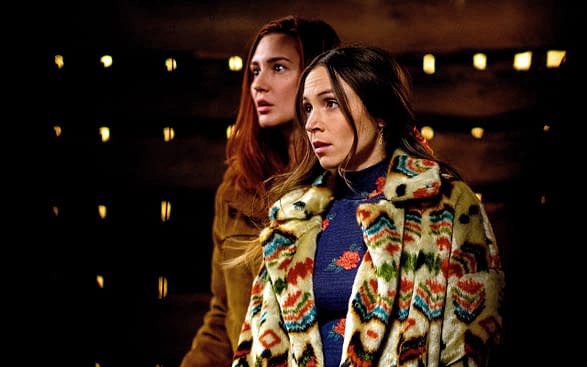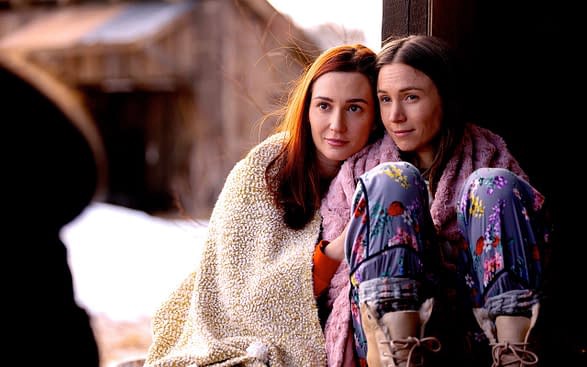This article contains minor spoilers for Buffy The Vampire Slayer, The 100, and Wynonna Earp.
Have you ever sat down to watch a TV show or movie, only to notice that an LGBTQ+ character dies for what is seemingly no reason? Unfortunately, this occurrence, known as the “Bury Your Gays’’ trope, is all too common in media, where queer characters are given a tragic ending or death at a far greater rate than straight characters. This is often done for shock value, to further another character’s plot, or for the simple reason that these characters are not seen as important to the story.
One of the reasons that I love Syfy’s Wynonna Earp, the supernatural genre show currently on its fourth season, is that it goes against this trope, allowing its LGBTQ+ characters happiness and never killing them for reasons like those explained above. I would describe Wynonna Earp’s contribution to representation as important, specifically because of the fact that it defies the norm of queer suffering.
Before I talk about Wynonna Earp and how it defies the Bury Your Gays trope, why is it that LGBTQ+ characters are subject to this fate so often? The trope has actually existed since the 19th century, where queer characters in literature often only existed in subtext and died in the end — “punished” for their homosexuality. However, the specific Bury Your Gays trope in TV and film began in the 1930s with the Motion Picture Production Code, better known as the Hays Code. Concern about inappropriate content in films and scandals involving film stars led to fear that the government would begin to censor films. Rather than waiting for the government to censor them, Hollywood studios decided to adopt their own set of rules regarding what content could be included in films — effectively self-censoring.
The Hays Code restricted content a great deal, and many of its rules sprung from a focus on maintaining Catholic values. Some of the rules restricted or banned profanity, nudity, sexual content, childbirth scenes, the sale of drugs, violence, and sympathy towards criminals. One rule banned any sexual perversion, which meant that homosexuality could not be depicted in any way in films. If any character was even implied to be gay, they were often the villain in the story.
In the 1960s the rules of the Hays Code became more relaxed and were eventually abandoned completely, meaning that queer characters could again be shown in film. However, filmmakers wanted their content to be viewed as acceptable to a wide audience, so they wrote LGBTQ+ characters who could be “punished” for their queerness — very often by death. Because of this, many homosexual characters suffered or died onscreen.
The tendency for LGBTQ+ characters to suffer or die onscreen has been continued in television. One important instance of this occurred in 2002 in Buffy The Vampire Slayer, when Tara Maclay, part of the first lesbian couple to be portrayed in a recurring fashion on primetime network TV, was killed by a stray bullet to further her girlfriend’s storyline.
The deaths of queer characters, especially lesbian and bisexual women, came to a climax in 2016 when so many TV shows killed such characters that people began to take more notice of the issue. Most notably, queer character Lexa in the CW’s The 100 was killed off immediately after she and her girlfriend, Clarke Griffin, had sex and enjoyed a sweet moment together. Even if it was not the intention of the creators, this move fell right into the Bury Your Gays trope, equating LGBTQ+ love and sex with death.
This is where I come to Wynonna Earp and exactly why the show is so important in terms of positive LGBTQ+ representation. If you don’t know anything about the show, a basic explanation is that the plot follows title character Wynonna Earp, the great-great-granddaughter of old-West lawman Wyatt Earp, as she and her friends and family fight demons and other supernatural creatures.
The show features a central queer couple — Waverly Earp, bisexual sister to the title character, and Nicole Haught, lesbian police officer, known by the portmanteau or ship name “Wayhaught” to fans. Their relationship is a largely happy one, and it contains all of the elements that I love to see in an onscreen relationship — an adorable meeting, tender moments, true love, some drama, and (importantly) neither of the characters dying. Jeremy Chetri, another gay character on the show, is also allowed happiness and survival.

The show’s first season came out when LGBTQ+ viewers were still reeling from the recent deaths of Lexa and many other queer women on TV. Because of this, as the first season aired, Wynonna Earp creator and showrunner Emily Andras took the step of assuring viewers that Waverly and Nicole would not be killed, a promise that has been kept as the show continues. The show directly goes against the Bury Your Gays trope by keeping its characters alive, even going so far as to create characters that are sometimes referred to as “Unkillable Queer” characters.
In a genre where danger is inevitable and characters are often put into perilous situations, Waverly, Nicole, and Jeremy all make it through. By taking such simple plot steps as, for example, having one character wear a bulletproof vest in a pivotal moment, Wynonna Earp gives fans exactly the type of representation that many crave, in which they can watch LGBTQ+ characters without the constant fear that one of them will die for no reason.
I think that the happiness and survival of Wynonna Earp’s LGBTQ+ characters is incredibly refreshing in contrast to the prevalence of queer suffering and death in other television. The second half of season 4 is set to come out sometime in 2021, and I would highly recommend catching up on the show and watching the new episodes for positive queer representation that stays far away from the “Bury Your Gays” trope.
TV review originally published by Maddie Rehrman on January 6, 2021.

Comments